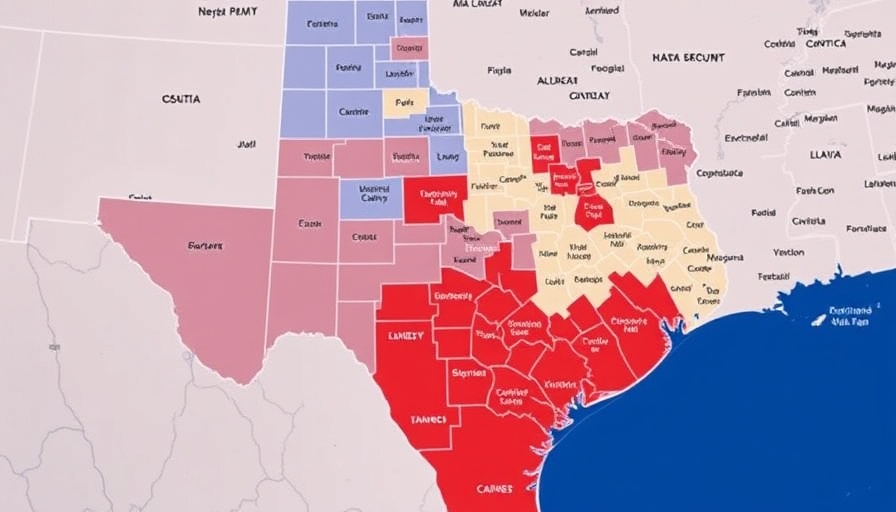
Texas Takes a Bold Political Step with New Congressional Map
The Texas State House committee recently advanced a controversial new congressional map as part of House Bill 4, representing a dramatic reshaping of nearly the entire congressional landscape in the Lone Star State. This vote, which took place along party lines, marks a significant moment in Texas politics, as the proposed changes aim to redraw 37 out of 38 districts. With the bill now headed for a floor vote, the implications of these changes are crucial for both Texas voters and the broader political landscape.
What’s Behind House Bill 4?
House Bill 4 is not merely a map revision; it signifies a strategic maneuver for the Texas Republican Party. According to State Rep. Todd Hunter, who authored the bill, the newly drawn districts lean Republican in political performance. However, Hunter acknowledged the risks associated with these changes, admitting that electoral success is not guaranteed. This statement has stirred controversy, especially among Democratic representatives who view these revisions as racially motivated attempts to solidify Republican power.
The Controversy: Racial vs. Political Lines
Following the committee's vote, Democrats voiced their concerns vehemently, arguing that the redistricting is not simply a partisan strategy but a breach of civil rights. State Rep. Chris Turner described the proceedings as a “travesty,” highlighting the hurried nature of the meetings and the timing of the vote. Critics allege that the map redraws are unlawfully designed to minimize the electoral impact of minority voters, referring to past letters from the Department of Justice that highlighted potential racial discrimination in Texas's congressional maps.
Historical Context and Legal Implications
This isn't the first time Texas has faced scrutiny over its congressional mappings. Over the years, numerous legal challenges have emerged, particularly concerning the Voting Rights Act. The current debate echoes historical instances where districts have been redrawn with contentious outcomes. The Trump Administration's previous correspondence with Texas officials suggests that current congressional lines may violate constitutional standards based on race. This legacy of conflict necessitates an examination of how such actions may incite future legal battles.
Future Predictions: Shaping Political Strategies
As the new congressional map approaches the House floor for a vote, its potential to reshape electoral strategies is significant. Should the map pass, it could potentially alter campaign approaches and voter mobilization tactics across the state. Political analysts predict that if these districts solidify Republican control, it may lead to longer-term strategies aimed at securing conservative interests in Texas. Conversely, Democrats might intensify their outreach efforts among underrepresented communities to challenge these new lines effectively.
Public Sentiment: Understanding the Voter Perspective
As debates over redistricting unfold, understanding the public sentiment in Texas is vital. Many Texans are concerned about how these changes will affect their representation. Secretary of State officials have noted that voters are increasingly aware of congressional boundaries and their implications, leading to heightened scrutiny over legislator actions. The pushback from Democrats highlights a growing awareness among constituents regarding the impact of redistricting on their rights and representation.
Conclusion: A Call to Civic Engagement
Stay informed about the unfolding developments regarding Texas's congressional map. Understanding these changes will empower you, as a voter, to take action in your local politics. Engage with your representatives, attend town halls, and actively participate in discussions around electoral integrity and representation. Your voice matters in shaping the future of Texas.
 Add Row
Add Row  Add
Add 




Write A Comment